Developers of the fast-growing genetically engineered salmon first started the approval process with the United States (US) Food and Drug Administration (FDA) in 1995. In 2019, we are a bit closer to having the option of buying this fish for ourselves, as the FDA clears the final regulatory hurdle to allow sale of AquAdvantage salmon.
In this article, learn how the salmon was created, what regulatory steps were completed, and about the health and environmental impacts of fast-growing genetically engineered salmon.
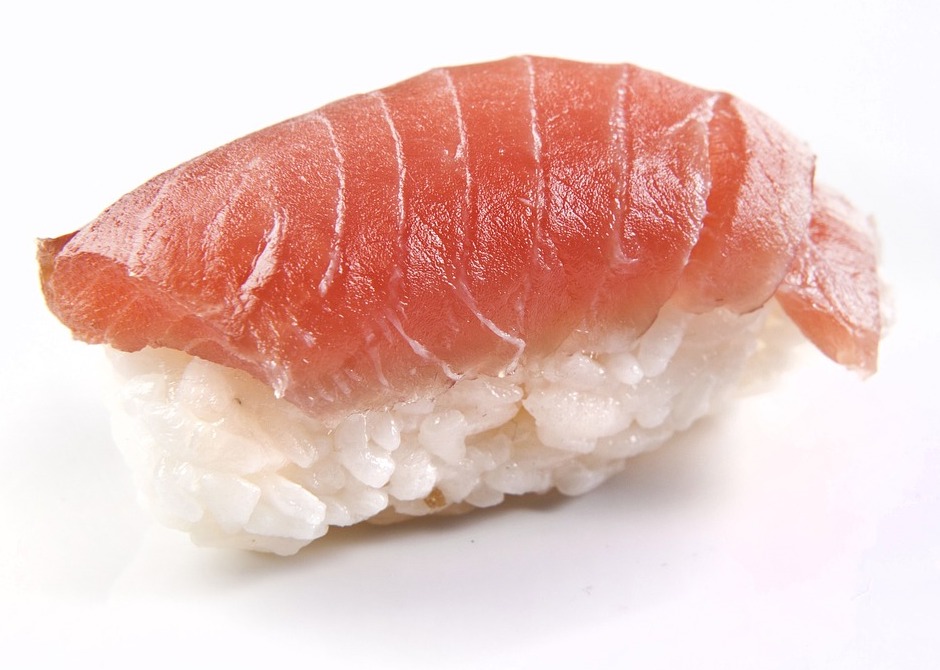
How were fast-growing GMO salmon created?
Canadian researchers created the fast-growing genetically engineered salmon with a growth hormone gene from Chinook salmon and a gene promoter from ocean pout. They microinjected the transgene into fertilized eggs of wild Atlantic salmon, and characterized the insertion.
The resulting genetically engineered fish are ~99.99986% Atlantic salmon, with the addition of just 4,205 base pairs in a genome of 2.97 billion bases. Further, the growth hormone proteins from Chinook and Atlantic salmon are 95% identical. This leaves the ocean pout promoter as the only “new” element. The developers chose this promoter because genes it controls are continually expressing – always on – as opposed to the salmon promoter for growth hormone, which is only on in certain environmental conditions.
Even though the inserted growth hormone gene is always on, it doesn’t have much of an effect unless the fish have access to food. When allowed to eat as much as they want (fed to satiation), juvenile AquAdvantage salmon can grow nearly 3 times longer than conventional juvenile Atlantic salmon. But in a simulated natural environment with limited food, juvenile AquAdvantage salmon grew only a little larger than juvenile conventional salmon.
While AquAdvantage salmon grow faster, they do not grow larger overall – adult AquAdvantage salmon and adult conventional Atlantic salmon are the same size. The genetically engineered fish just get to that size faster and with less feed. As FDA describes, “the overall total amount of feed required to produce the same fish biomass was reduced by 25%” for AquAdvantage salmon.

Farmed fish are the future
There will always be a place for wild-caught fish on our plates, just as there is a place for other speciality products like heirloom pork, wild mushrooms, and so many other wonderful things. But in a world with a growing population and a growing demand for nutritious fish like salmon, we can not rely only on wild stocks. Aquaculture is a necessity.
Wild-caught Pacific salmon are not able to meet demand, in part due to vulnerability to higher water temperatures related to climate change. In 2018, US west coast salmon fisheries along Washington, Oregon, and California requested fishery disaster assistance from the Department of Commerce due to commercial fishery failures in 2015, 2016, and 2017.
Even as wild fisheries decline, demand for salmon is increasing. In 2016, the US imported ~339,000 metric tons of salmon, mostly farmed Atlantic salmon raised in cages in the ocean, as Richard Martin reports in Genetically engineered fish is not a matter of “if” but “when”. In 2018, the US imported 403,107 metric tons of all types of salmon, with a value of over $4.1 billion, (327,116 metric tons and $3.4 billion of Atlantic salmon alone) according to the National Marine Fisheries Service.
The Monterey Bay Aquarium Seafood Watch rates indoor farmed salmon (raised the way genetically engineered salmon would be raised) as a “Best Choice.” Fish that grow faster will consume less feed, take less energy, decrease prices for consumers, and potentially provide a product with fewer parasites than ocean-raised fish. All this, with the potential to create jobs in the US with additional rearing facility locations, and to decrease reliance on ocean-based farms and open-air ponds that pose known risks to ecosystems.

How were GMO salmon regulated?
In the US, AquAdvantage salmon required two assessments: one to determine safety of a new animal drug that would be entering the food supply (under the Coordinated Framework for Regulation of Biotechnology, new genes and gene products in genetically engineered animals are regulated as animal drugs by the FDA), and one for potential risk to the environment (as required under the National Environmental Policy Act).
In Canada, AquAdvantage salmon required three assessments: one for safety and nutrition of the salmon for use as food, one for safety and nutrition of the salmon for use as a livestock feed, and one for potential risk to the environment.
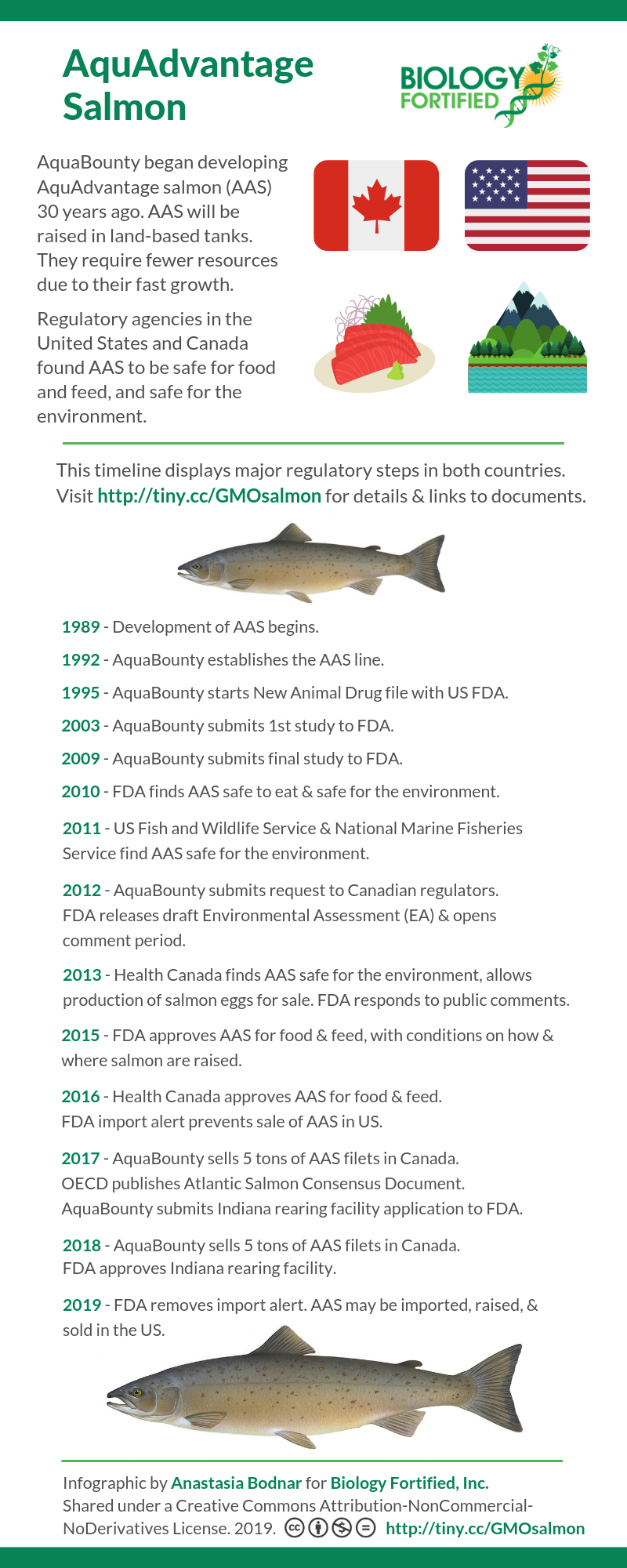
Is genetically engineered salmon safe?
The regulatory process may have been lengthy, but one benefit is that we can be confident that the salmon is safe to eat and safe for the environment. We have two independent sets of regulatory processes to consider, one in Canada and one in the United States. While there are similarities in what the regulatory agencies are looking for, the laws and regulations were developed independently and the people in the agencies themselves are different, under different types of internal and external influences.
The agencies in both the United States and Canada independently found fast-growing genetically engineered salmon to be safe to eat and safe for the environment. A summary of the safety findings from the regulatory agencies is below.
GMO salmon for food and feed
The regulators considered three main types of issues with regard to using AquAdvantage for food and feed: nutrients, hormones, and allergenicity.
Protein, fats, vitamins, and other components of fish and other foods can vary widely due to the variety of the plant or animal, the place it was raised, the weather while it was growing, and many other factors. Because there is so much variation within each food type, a simple comparison between genetically engineered and non-genetically engineered doesn’t make sense. Instead, scientists and regulators look at a range of values.
For example, a Consensus Document for maize reports that protein in field corn ranges from 6% to 12.7% of dry weight. Therefore, in testing the protein of corn with genetically engineered traits, we’d need to take a second look at any values that fall outside of that range.
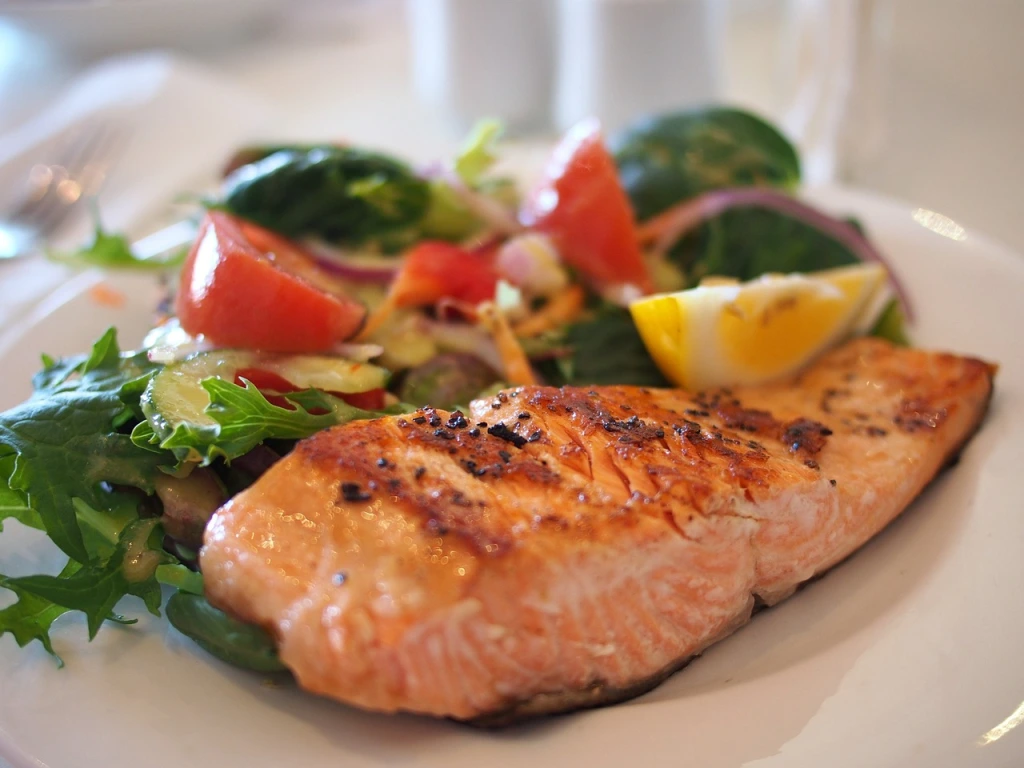
Nutrients in GMO salmon
Both FDA and Health Canada determined that fast-growing genetically engineered salmon is safe for humans and animals to eat. Both agencies found that there were no substantial changes in the protein and fat (including omega-3 fatty acids) profiles of AquAdvantage salmon compared to expected ranges.
For diploid AquAdvantage salmon, the niacin level was higher than expected ranges, but the level is not of nutritional concern. The majority of AquAdvantage salmon salmon (more than 99%) are triploid, and triploid salmon had niacin levels within expected ranges.
Hormones in GMO salmon
Specific concerns with AquAdvantage salmon include increased hormone content in the edible parts of the fish. Both FDA and Health Canada concluded that there is no health risk to humans or livestock associated with hormones in AquAdvantage salmon.
First, the growth hormone produced by AquAdvantage salmon is from Chinook salmon. Chinook salmon are commonly consumed and have a safe history of use, with no concerns about toxicity. Second, the amount of growth hormone (and associated regulatory hormones) in muscle and skin of adult (market weight) AquAdvantage salmon was not distinguishable from conventional salmon. People who eat AquAdvantage salmon would not be exposed to any more growth hormone than people who eat conventional salmon or other animal-sourced foods.
Health Canada points out that “the scientific literature has consistently shown that dietary growth hormones from various animal species have very poor bioavailability in mammals and humans.” This means that growth hormones consumed in the diets are primarily digested, not absorbed intact. Any tiny amount of the Chinook salmon growth hormone that might be absorbed would have a limited effect in humans “due to the species specificity exhibited by the human [growth hormone] receptor.”
Allergens in GMO salmon
Fish, including salmon, is a major food allergen. Of course, people who are allergic to salmon will also be allergic to AquAdvantage salmon. Still, the regulatory agencies investigated whether AquAdvantage salmon would have more fish allergens than conventional salmon. Analysis showed that allergens in triploid AquAdvantage salmon were within the normal range found in conventional salmon.
Diploid AquAdvantage salmon (less than 1% of AquAdvantage salmon) did have statistically higher levels of allergen content, but experts concluded that there would be no impact on non-allergic consumers, and no change in allergenicity for allergic consumers.
GMO salmon in the environment
If reproductive-capable, fast-growing salmon were to escape captivity, they could theoretically breed with nearby salmon or trout and spread the gene for fast-growth. This could have negative consequences for the salmon population, their food sources, competing fish species, and other parts of the ecosystem.
When AquaBounty requested FDA approval of their AquAdvantage salmon, they were very specific about how and where the fish would be raised. The request was for one egg production facility in Prince Edward Island, Canada and one fish production facility in Panama. AquaBounty later requested that a fish production facility in Indiana be added. FDA’s approval is for these locations only, and additional approval would be needed for more locations.
AquaBounty selected (and FDA approved) these locations to have many overlapping ways to prevent release of GMO salmon into the environment. The containment methods include biological, physical, and environmental aspects.
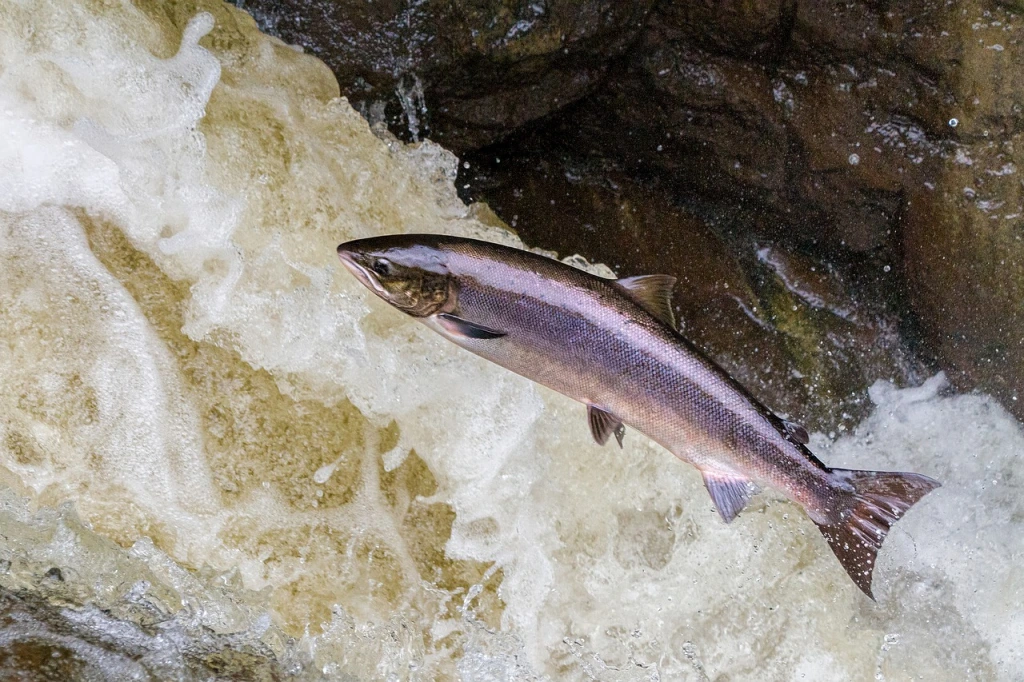
Biological containment
Part of biological containment is Atlantic salmon’s own biology. Atlantic salmon reproduction requires fresh running water over a gravel bed. Salmon have complex mating and nesting behavior, and a sexually compatible male must be present when the female spawns. In the waters near the egg and fish rearing facilities, there are no males or gravel beds. Even if a female were to spawn, the eggs would not be fertilized. In addition, spawning takes so much energy that 60% or more female salmon die after spawning.
Another part of biological containment is that AquAdvantage salmon can not breed – they are sterile. AquaBounty pressure treats salmon eggs to induce triploidy (3 sets of chromosomes instead of 2 sets). Since a small percentage of triploid males can reproduce, AquaBounty adds another layer of biological containment by only using female fish. A 2018 study, Comparisons of reproductive function and fatty acid fillet quality between triploid and diploid farm Atlantic salmon, confirmed that “escaped triploid farm salmon are very unlikely to reproduce in the wild.”
If you eat fish, you’ve likely already dined on triploid fish. Triploid fish of many species, including salmon, trout, and carp, have been used around the world for decades. They are used in commercial fisheries and recreational fishing areas to prevent farmed or stocked fish from breeding with wild fish. Triploid fish grow to a larger body size and have higher quality meat because the animals do not undergo the stress of reproduction. Other triploids that we eat include bananas and watermelon.
Lastly, the fast-growth trait serves as a sort of biological containment as well. Fast-growing fish (whether resulting through breeding or biotechnology) and triploid fish have some changes relative to conventional diploid salmon that could decrease survival in the wild. Changes that may affect AquAdvantage salmon survival in the wild include: increased metabolism causing smaller energy reserves, higher oxygen consumption, decreased tolerance to stress, increased appetite, increased aggression, and reduced response to predators.
Physical containment
Because a small percentage of AquAdvantage salmon could be capable of reproduction, additional containment methods are necessary to ensure eggs or fish do not escape. Their facilities use numerous layers of filters, screens, and nets. Chlorine is used in drains to kill eggs or fry that might somehow slip through. Facilities are inspected daily and standard operating procedures are in place for every process in each facility.
AquaBounty also has security to protect against human sabotage. Facilities have security cameras (the Panama facility has guard dogs) and fencing around each property (fencing is topped with barbed wire at the Panama and Indiana locations) among other measures.

Environmental containment
In the highly unlikely case that a fertile AquAdvantage salmon could escape, the local environment near each facility would make it nearly impossible for any escapee to survive to adulthood, find a sexually compatible male fish, and reproduce.
The egg production facility is located in Prince Edward Island, Canada. The biological and physical containment measures mean it is nearly impossible that a fertile egg would make it past the filters and chlorine. Any that did would not find a good place to grow into adult fish. The eggs are raised in fresh water, so the salinity in the nearby river reduces likelihood of survival. In the winter, water near the facility is too cold for salmon. Any escaped eggs that somehow managed to grow into adult female fish would not find a male to mate with. Atlantic salmon previously lived in this area, but overfishing, barriers to migration, and acid rain have made them locally extinct.
The fish production facility in Panama is located at a high altitude near a river that drains to the Pacific ocean. Much of the river water is used for power generation, and canals that control water flow are not suitable for salmon. Dams provide a physical barrier to movement downstream. If any fish escaped and they managed to get past the barriers, they could potentially survive in the river closest to the facility, but they would not find any males to mate with. If they tried to move out to sea, high temperatures in the lower lower parts of the river would kill the salmon.
The fish production facility in Indiana includes a series of ponds that will be seeded with wetland plants to help clean effluent before it drains away from the facility. Effluent from the ponds must pass through a screen before reaching a drainage ditch that ultimately drains into the Mississinewa River. The ditch is dry except during wet weather. Even with the effluent from the facility, the water levels in the ditch are expected to be only 1-2 inches near the facility. If fish somehow managed to get out of the facility, past the ponds with screen, and past the ditch into the Upper Mississinewa watershed, they may find conditions where they could survive during some times of the year. However, the watershed is too warm with too little oxygen and too much dissolved solids for salmon and related species like trout. A survey of the watershed found no species of trout or other cold-water salmonids at any of the 35 sampling sites, so any escaped females would not find a male with which to mate. There is also a dam downstream of the facility that would prevent movement of fish, if they were to somehow survive.
The FDA states that “at full capacity, the [Indiana] facility will harvest approximately [90 metric tons] of AquAdvantage Salmon per month.” This will meet only ~0.27% of US demand for salmon (403,107 metric tons in 2018). If there is reasonable consumer acceptance of AquAdvantage salmon, AquaBounty may request approval for more facilities from the FDA. Those facilities will be regulated and inspected by FDA and appropriate agencies in the state in which they are located, continuing to keep appropriate environmental containment of the fast-growing genetically engineered salmon.
Editors’ note: Parts of this post previously appeared in Risk assessment and mitigation of AquAdvantage salmon and in Preventing escape of GMO salmon.
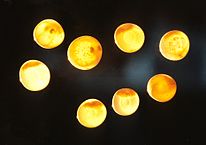
innovative and interesting
LikeLike
Nice summary. An additional point about geographic containment for the Indiana facility. The Mississinewa River watershed ends up in the Wabash River, which is a tributary of the Ohio River, which is a tributary of the Mississippi River, which flows to the Gulf of Mexico. The Gulf is way too warm for salmon to survive and a salmon would need to swim through more than a thousand miles of warm water to reach the normal habitat of Atlantic salmon.
LikeLike
Excellent article as always, but one small clarification. The FDA didn’t clear a final regulatory hurdle, that was done with the 2018 approval of the Indiana production facility (the fish itself being approved in 2015). What was cleared was a politically motivated import restriction. But that might be getting too far into the weeds for a general overview article.
LikeLike
Indeed, Charles! Even in the extremely unlikely event that a fish would escape the Indiana facility, they would not survive.
You are correct, Richard. It’s a bit of a fine point that I didn’t want to get into here – political motivations around AquAdvantage salmon could be an entire post on its own.
LikeLike
It is worth noting: the fish are 99% sterile, but Aquabounty is investing in making them 100% sterile.
LikeLike
Do you have a link or article about AquaBounty’s efforts to share, Kreshnik? I’d like to learn more!
LikeLike
Re Kreshnik Bejko’s comment,
https://aquabounty.com/the-center-for-aquaculture-technologies-and-aquabounty-sign-research-agreement-to-produce-sterile-finfish/
But this is more likely to be used on newer fast growing fish varieties, since I doubt that AquaBounty will want to go through another round of approval for the AquAdvantage salmon.
I have another comment which is speculative, not something I am sure is right. Sterility is sometimes a virtue in aquaculture, for reasons that have nothing to do with genetic isolation. I know that this is the case with oyster farming. Many, perhaps most, farmed oysters are triploid. The energy the oysters might otherwise have put into reproduction is therefore diverted into faster growth. I am not sure about the same idea for fish. There might also be some advantage for farmed fish if sexual agressiveness is diminished.
What I do know is that when AquaBounty was confronted with the need to prevent the AquaAdvantage salmon from crossing with wild Atlantic salmon, they didn’t need to develop the triploid and sterility technology from scratch – it was already used in other fish farming.
LikeLike
Thanks for the link, Charles! You are correct, sterility is a good thing is aquaculture. I added a paragraph in the Biological Containment section: https://biofortified.org/2019/03/gmo-salmon-approved/#biological
It’s not just aquatic animals, either. Sterility (caused by castration rather than triploidy) can be beneficial for land-based livestock, too. It’s long been known that intact bulls produce less meat, and lower quality meat, than castrated steers. A similar effect is seen in plants – if you want high quality tubers, leaves, or other plant parts, it often makes sense to choose a variety that is sterile or somehow reduce/prevent flowering or seed production. The organism is effectively “wasting” a lot of energy on reproduction when we’d like them to make food for us instead.
LikeLike
In production, what are they going to eat? Do the food sources reduce wild forage fish?
LikeLike